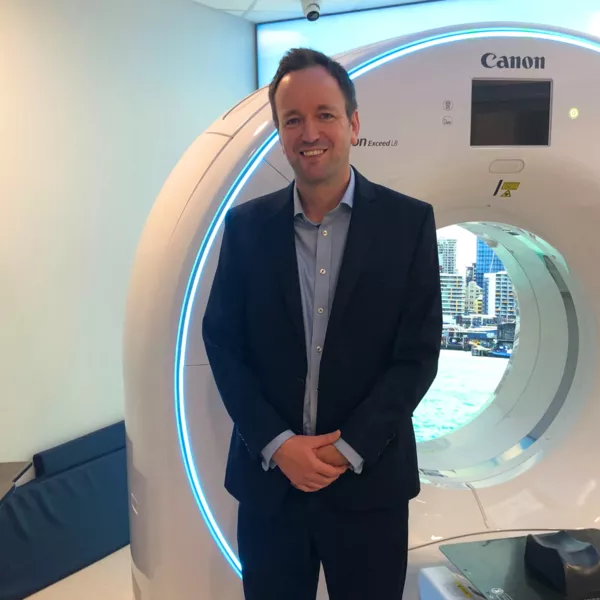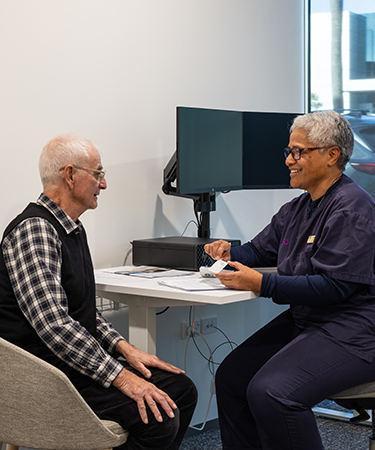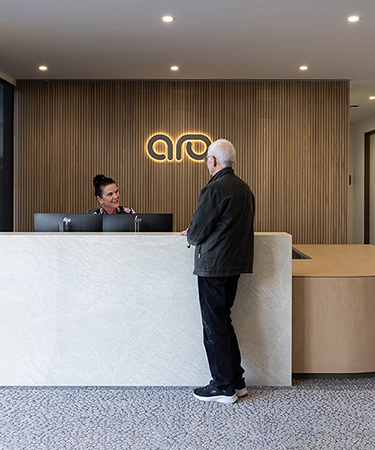Meet Ian Hanson – ARO’s Chief Physicist
Tue June 3rd 2025
Ian Hanson, Chief Physicist at Auckland Radiation Oncology (ARO), is driven by a passion for combining scientific innovation with helping people. Originally from the UK, he spent years immersed in physics, earning a PhD in nanophysics. But it was the chance to use that knowledge to support people through some of life’s most difficult moments that ultimately shaped his path.
That journey led him to radiation oncology, a field he describes as “constantly evolving, deeply technical, and a way to use physics for the greater good.”
From Nanophysics to Life-Changing Cancer Care
Ian began his medical physics career at the Royal Marsden Hospital in London, one of the UK’s leading cancer hospitals, where he spent over a decade working at the cutting edge of radiation therapy. He loved working with the latest technology and being part of a team pushing the frontiers of cancer treatment
When the opportunity arose to join ARO in New Zealand, Ian saw a chance to apply everything he’d learned in an agile and patient focused environment - bringing world-class research and practice to a centre known for its excellence and innovation.
What Does a Chief Physicist Do?
Radiation oncology relies on some of the most advanced technology in medicine. At a high level, medical physicists are responsible for making sure all the technology used to deliver radiation therapy works exactly as they should. But the role goes far beyond maintenance.
“Our job is not only to ensure safety and accuracy, but to lead innovation,” says Ian. “We work closely with oncologists and radiation therapists to fine-tune treatments for each patient. We also introduce and adapt new technologies and techniques to ensure our patients receive the best care possible.”
For Ian, this forward-thinking approach is a key part of the job. “I’ve always been fascinated by what’s next – new breakthroughs in science and technologies. An important part of my job is horizon scanning, seeing what's coming, and then ensuring the organisation is ready for these developments.”
ARO currently has a research agreement with one of the world’s leading oncology software providers to help develop the next generation of online adaptive radiotherapy - a technique that can adjust a patient’s treatment plan in real time while they’re lying on the treatment table. This is possible because ARO is already using some of the most advanced machines and software available, putting them at the leading edge of radiation therapy.
Innovation in Action: CyberKnife at ARO
Ian is very excited about the potential CyberKnife offers. CyberKnife is a robotic system that delivers highly precise, high-dose radiation to tumours in the body. It uses real-time imaging to track both patient and tumour movement, adjusting instantly to changes.
“CyberKnife is a great example of the advanced treatments we can now offer patients,” Ian says. “It allows us to target cancer with sub-millimetre precision, reducing damage to healthy tissue and improving outcomes.”
This precision has real-life implications. Thanks to innovations like CyberKnife and advances in treatment planning, many cancers that once required 5 to 8 weeks of radiation can now be treated in just 5 sessions.
Reduced Treatment Times are Meaningful for Patients
Ian says “Take breast or prostate cancer, for example. Radiation treatment for breast cancer has gone from 25 sessions to 15, and now in some cases, just 5. The same is true for prostate cancer - where treatment has reduced from 37 sessions to 20, and now also to just 5.”
He explains that for patients, the difference between coming in for treatment over 8 weeks versus just 1 week is significant, especially if you are travelling for treatment. For people working, caring for family, or managing other responsibilities, fitting in daily appointments for months can be incredibly challenging - not to mention the financial strain it can cause. There’s also the emotional toll of living with a cancer diagnosis. Being able to finish treatment in a single week can make a big difference to a person’s mental wellbeing.
And it’s not just about convenience. Shorter treatment times with precise, high-dose radiation have been shown to be just as effective, with equivalent or improved side-effects and long-term outcomes.
What’s Next for Radiation Oncology?
“The future is incredibly exciting,” Ian says. “We’re moving toward faster, more personalised treatments powered by AI and automation.”
Currently, it can take several weeks between a patient’s CT scan and the start of their treatment. But Ian sees a future where that same process could happen in just minutes. He describes a dream scenario where a patient visits a radiation oncologist on Monday, agrees to treatment, receives it on Wednesday and Friday - and finishes by the end of the week. “We could be looking at a pathway,” Ian says, “where you find out you have cancer at the start of the week, and by the end, it’s treated.”
ARO: A World-Class Centre for Innovation and Care
What sets ARO apart isn’t just the technology - it’s the people. Ian and his team are part of a global community of medical physicists, contributing to international research, collaborating with top developers, and ensuring that ARO patients benefit from the latest advances in oncology. The ARO team deliver world-class care with compassion and personal connection.
“Our size allows us to move quickly, and our commitment to excellence means we don’t compromise,” Ian says. “We’re delivering care that rivals the best centres in the world - right here in New Zealand.”
Radiation therapy may still be under-recognised in the wider conversation about cancer treatment, often overshadowed by surgery and chemotherapy. But make no mistake: it is one of the most effective, fast-evolving tools in modern oncology. And thanks to experts like Ian Hanson, ARO remains at the forefront - combining advanced science with compassionate care to change lives every day.

Understanding Your Treatment
The Patient Pathway
We understand you may be anxious about having radiation therapy. Read about the patient pathway and what to expect before, during and after radiation therapy treatment. At ARO we work closely with your radiation oncologist to develop an individualised treatment plan for each patient.
Explore the patient pathway





